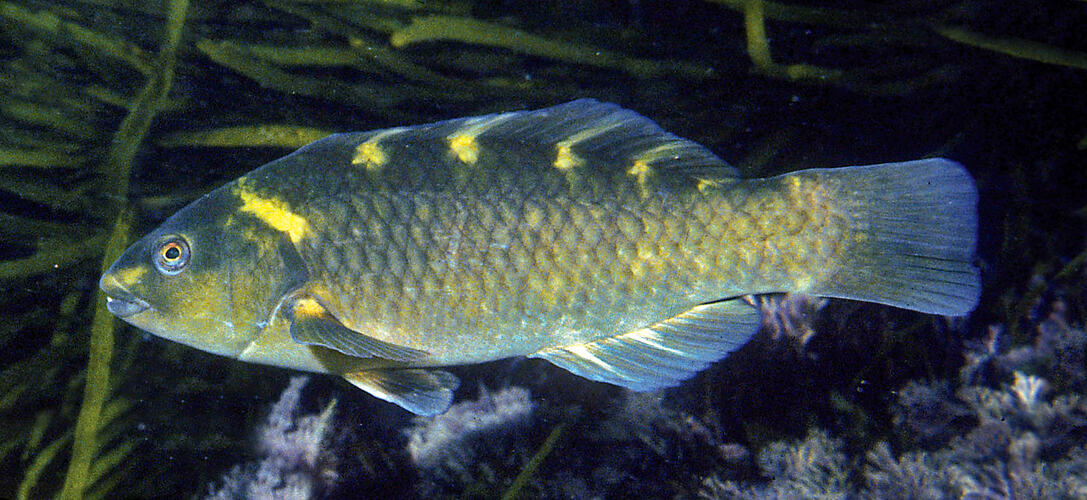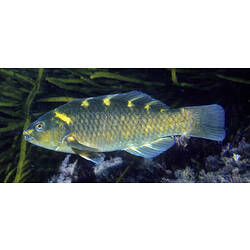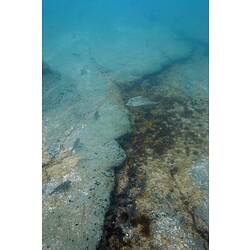General Description
Moderately deep-bodied wrasses. Adults overall greenish-blue to brown, with a purple tinge, and five indistinct yellowish bars on body and fins. Juveniles reddish-brown with green and orange mottling. To 45 cm.
Biology
These fishes are carnivores with strong canines and crushing teeth for feeding on benthic invertebrates such as crabs, bivalve and gastropod molluscs and echinoderms. Juveniles prey on tiny amphipod and isopod crustaceans. Unlike most wrasses, which usually change sex from female to male during their life, all Purple wrasses start life as females, and some change sex to become males before they mature. This means that both large males and females are present in the population, which in relatively rare in the family labridae.
Distribution
New Zealand and south-eastern Australia.
Habitat
Kelp beds on exposed and moderately rocky reefs, in depths of 1-90 m.
More Information
-
Animal Type
-
Animal SubType
-
Brief Id
Slender wide body, green-blue to brown with five yellowish bars on body and fin.
-
Maximum Size
45 cm
-
Habitats
-
Endemicity
-
Commercial
No
-
Conservation Statuses
DSE Advisory List: Not listed, EPBC Act 1999: Not listed, IUCN Red List: Least Concern
-
Depths
Shallow (1-30 m), Deep ( > 30 m)
-
Water Column Locations
On or near seafloor
-
Taxon Name
-
Scientific Author
(Richardson, 1840)
-
Common Name
Purple Wrasse
-
Kingdom
-
Phylum
-
Subphylum
-
Superclass
-
Class
-
Order
-
Family
-
Genus
-
Species Name
fucicola



